
Mr. D
-
Posts
50 -
Joined
-
Last visited
-
Days Won
5
Content Type
Profiles
Forums
Events
Posts posted by Mr. D
-
-
-
-
I Think That You Can work in steps: general electronics, tape transport and associated electronics, heads and audio electronics.
Old capacitors like the yellow Frako ones are doomed to failed and will need to be Replaced at some stage. The same goes for resistors, relays, etc.
A fully updated transport with all bearings Functioning and perfect tape tension is the foundation of a properly operating tape deck. There is a reason why the master recorders are massive. It is Because the tape transport has been overengineered in Order to Achieve the best possible results. Hence the importance for having the transport fully up to the original specifications.
Heads have to be in good shape and must be perfectly aligned.
Finally, there is the audio electronics. In That area, there are ways to Improve the original specifications. For example, there are new generation of transistors That are Providing higher current gain with Increased dynamics and reduced noise floor.
After the complete overhaul of my A80, my technician assured me That it was still possible to Improve the audio electronics. Also I am working with Todor Dimitrov from the Master Tape Sound Lab on That front. Currently I am in the middle of this process. As I have Several Several sets of audio cards, I am able to make direct comparisons after each change. I hope That the process will be fully completed in about two months. Once fully completed, I will report back with some pictures and Further explanation.
Of course, this is not cheap and you way wonder Whether this might be an overkill. Even after all These upgrades, the tape deck is still the Cheapest audio source that i have in my system. Relative to my collection of 150 master tapes (and still growing), I believe it is worth every penny.
Happy New Year and Best Wishes.
-
-
Yes. Limited to 496 copies.
-
-
Congratulations for the acquisition and welcome to the club of A80 owners.
There were basically 3 main iterations of the A80:
- The A80 VU with the record and reproduce electronics housed in the VU meter bridge.
- The A80R. This was a cheaper version than the VU which was designed for the broadcast industry. It came without VU meter bridge and the electronic cards were borrowed from the B62
- The A80RC. The same as the R but in a more compact design which allowed to use a removable trolley. The A8ORC came in different iterations ( with our without VU meter bridge, butterfly heads etc.). You can find a sales leaflet on the web:
A80RC MK I were produced before 1980 and MK II after 1980 with serial number starting as from 20.000.
OEM parts can still be purchased from Audio House in Switzerland (new heads etc.) but they are very expensive.
-
Google tanslate is a nightmare. The original post is in English and then it retranslates again into something totally rubish.
-
1 hour ago, said BigBlue:
Thank you for a break feast and interesting explanation. What Should One Expect When It Comes To future service needs (During normal Circumstances) for a machine That has been so well serviced? Are we talking about 1 year or 5 years of troublefree enjoyment. One one hand it is fully refurbished - on the other hand it is an old machine.
My technician's lab is just 10 minutes away from my home. We Have Agreed That he will come every year to my house for a quick check. As my tape recorder is not being used intensively Compared to a studio machine, my technician is confident That a service every 5 to 10 years ice Sufficient (checking the bearings, oil, etc.). He jockingly Stated That the machine was good for another 40 years. When you see the build quality of a A80, you can believe That These machines have been designed to last forever.
-
On 16.11.2017 at 09:40, Bebop said:
Apexorca wrote: With all due respect to the purchasers of These machines are new and more refurbished than usual, so I do not really understand what could be the benefits.
Let me explain why I Decided to fully overhaul my A80RC MkII.
When I Decided to explore the universe of the master tapes, I quickly Realized That the bulk of my investment wouldl ask the tapes and not the recorder. I am slowing down my acquisitions of vinyl records and compact discs. I am shifting to the master tapes and high resolution files. I have about 150 tapes and my collection is still growing. At an average price of 240 euros for a single tape, I thought That it would be worth Acquiring one of the best master tape recorders available on the market, hence my decision to Acquire a Studer A80RC. It took me more than one year to find my grail.
What differentiates Studer A80 and A820 from other tape recorders is the tape transport mechanism. This transport mechanism is highly sophisticated and represents the core of a master tape recorder. In order to fully benefit of the advantages of a master tape recorder, you need to ENSURE That the tape transport is in its absolute best. The heads are an Important Issue. The electronics Should follow the same path.
A friend of mine used to own an analog recording studio and every year all his gear would go through a maintenance process. During the golden age of the analog recording studios, this was a standard routine. The tape decks would be maintained and all defaulting pieces or pieces likely to fail were replaced.
I found my A80 for a reasonable price. It had been "sleeping" in a small recording studio and Because it was not being used, it had not gone through the standard yearly maintenance since a longtime.
I had Several options: a reasonable overhaul or a break one party with the aim at Achieving even better specifications than the original machine. In Decided to go for the second option. I have the chance of having a technician who is fanatic about the Studer A80 recorders and who knows how to get the best out of them.
The vast Majority of the new party are actually new old stock Studer party sourced from Audio House in Switzerland. All capacitors and resistors have a shelf life and have to be replaced. There are ways to Improve the recorder by using parts with tighter specifications and Improving the shielding against radio frequency interferences.
I have listened to Several Studer A80 tape recorders and all what I can say Is that you can tell a difference between Those That are well maintained and Those That Are Not. I am not afraid to Claim That mine sounds ever better than some of the well-maintained ones. What is worth the extra mile? I believe so. It is still the Cheapest source component I have Compared to my turntable or my CD / SACD player and it represents just a fraction of the cost of my ever-growing tape collection.
Music plays an Important Issue Party in my life and the master tapes have brought me to a level of enjoyment that i never had before.
-
3 hours ago, said calle_jr:
Amazing setup. It Seems he's using a King Cello tape preamp?
No tape preamp.
The ATR 102 were modified by David Manley. The Studer C37 are stock electronics. We only listened to two ATR 102 (1/4 and 1/2 inches). The most impressive recording was a 1/2 inch tape played at 76 cm / sec.
-
-
Indeed. The turntable in the middle is used as a flywheel. The belt from the engine is connected to the flywheel Which is, in turn, connected to the turntable.
During my visit, I did not listen to the turntable as the main purpose was to listen to the original master tapes.
It is a rather odd Setup as Micro Seiki Designed for its high end models (the 5000 and 8000 series) a dedicated flywheel That could be added on the right rightside of the turntable:
- Left side: engine
- Middle: turntable
- right side: flywheel
I found out afterwards That Mr. Ricci's Studer were modified and are maintained by Fabio. The acoustic treatment was supplied by Fabio as well.
-
Since I joined the R2R bandwagon, I have been on the hunt for quality master tapes of classical music recordings. I have a keen interest in chamber music, concertos and ancient music with a lesser focus on symphonic and opera works.
One particular Italian record label caught my attention. Fonè Records offers a wide variety of jazz and classical music recordings. Mr. Ricci, the owner and founder of Fonè has recorded more than 600 works since the early 80ies. All recordings are directly performed in both analog and digital domains (tapes and DSD). A large portion of the catalogue is available on Qobuz, the French streaming platform. It allows me to listen to the recordings and choose the tapes I want to acquire. I have about 60 individual tapes from Fonè.
Fonè’s catalogue comprises CDs, SACDs, high resolution files (DSD and PCM), LPs and tapes. All LPs are limited to 496 copies as just one stamper is produced.
The quality of the recordings is quite striking. Mr. Ricci has explained me that he is using a limited number of vintage Neumann microphones (nor more than six microphones) and he does not add any processing gimmicks leading to a very natural and rich sound.
For the recording sessions, Mr. Ricci mainly uses several Ampex ATR 102 tape recorders. He usually records on half-inch tapes at a speed of 30 IPS. The transfer from the original master is done through a Nagra IV S. Mr. Ricci also owns several Studer C37 including one deck which has been impressively modified to accommodate one inch tapes.
All tapes are made to order by Mr. Ricci himself as he refuses to delegate this work to his associates.
I had the privilege to visit Mr. Ricci’s private audio room in Tuscany where I listened to the original master tapes and DSD files on a top-notch setup including, among others, ATR 102 tape decks, dCS DACs, Audio Note power amps, a Be Yamamura dual mono preamp, a Cello Palette and double stacked Tannoy Westminster loudspeakers.
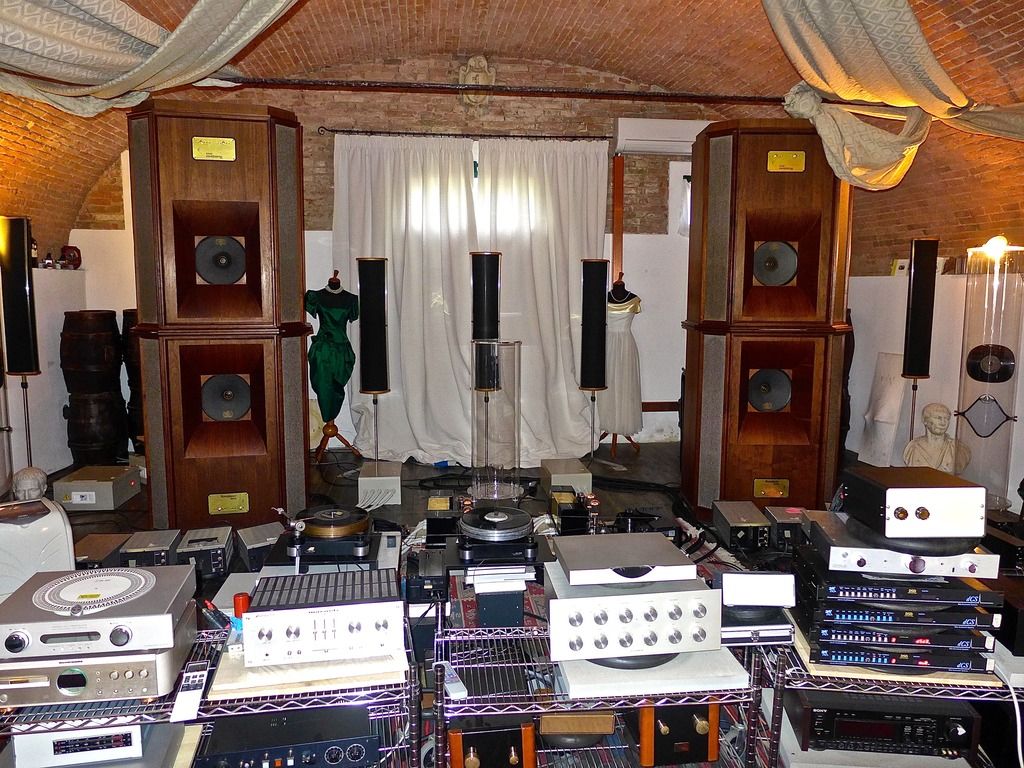
A collection of ATR 102 (quarter and half inch). Two Studer C37, one being modified with one inch heads. Nagra IV S.
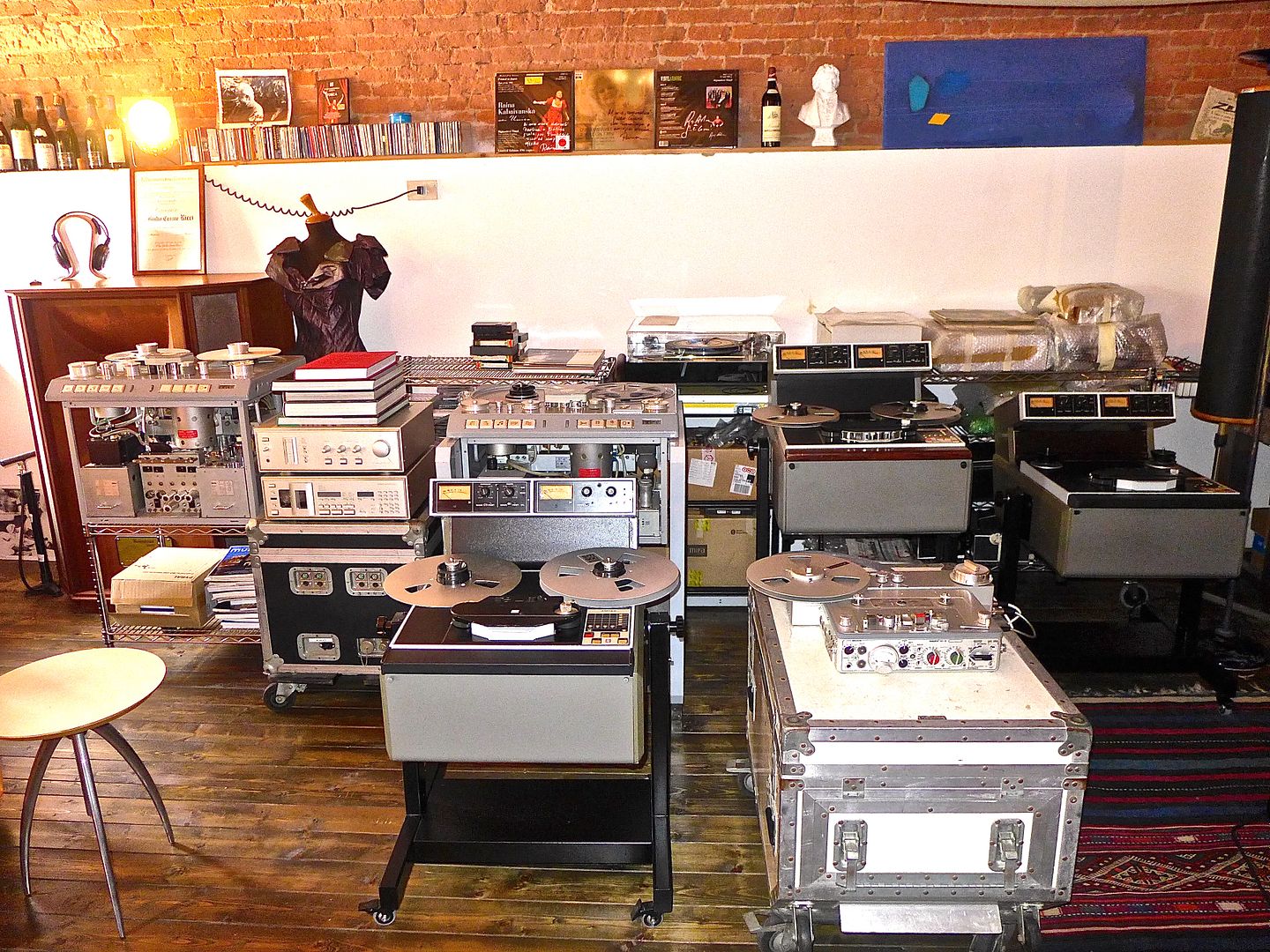
Audio Note power amplifiers

Studer C37 with one inch heads

The soundstage was just fabulous. The dynamics associated to the wealth of musical information immersed me in a musical experience that was rather unique. Mr. Ricci also told me a lot of anecdotes associated to each recording that he was playing.
For those of you who do not know Fonè Records and the associated master tapes offering, I would encourage you to discover this beautiful audiophile record label.
-
On 02/11/2017 at 10:43, Bebop said:
Well, the connection was easy to do. Fabio delivered a player to the other guy who introdcerade his friend who we also visited (Mr. D).
Let my clarify how I discovered the Han-D-Mag.
The Hand-D-Mag got recommended to me by the technician who refurbished my Studer A80RC and not by Fabio. I did not know Fabio at the time. I only discovered afterwards that Fabio was also recommending the same tool to Flyer, my friend who purchased a Studer A80 from him.
I did not buy my Studer from Fabio but I acquired it from a French recording studio and I have a local tech close to my home who took care of the overhaul. According to my tech who mainly works on A80, A800 and A820, the Hand-D-Mag is highly powerfull and is well suited for Master Recorders and multi-tracks recorders.
-
On 09.09.2017 at 21:25, flyer said:9 minutes ago, calm said:
The living Lunken Regarding music listening Begins to Appear. Is still impressed above all the dynamics and spatial feeling. Think of the collaborative instrument's sound is much better. Have Only a trio band so far, but has orders supine and I hope for. Otherwise, there has so far been a party solo piano is interesting to listen to.
Have there started to developmental my old accessories for cleaning, editing and demagnetisering.
From left Ferrographs defluxer transparent leader tape for photocell action red tape conductor, my old redigeringsset with different ledartejper and tapes for bonding tapes and finally cleaning kit from Revox with the bottle with soapy water to rubber parts. Isopropanol May be used only on the heads and other metal parts,. Rubber parts have the probability to dry if they come into contact with alcohol.
Calm
May I suggest you That Consider Acquiring a He-D Mag demagnetizer. They are well suited for the Studer and Their tip is in plastic Which allows to touch the heads Risking without scratching them.
-
Some tapes to keep me busy this weekend :
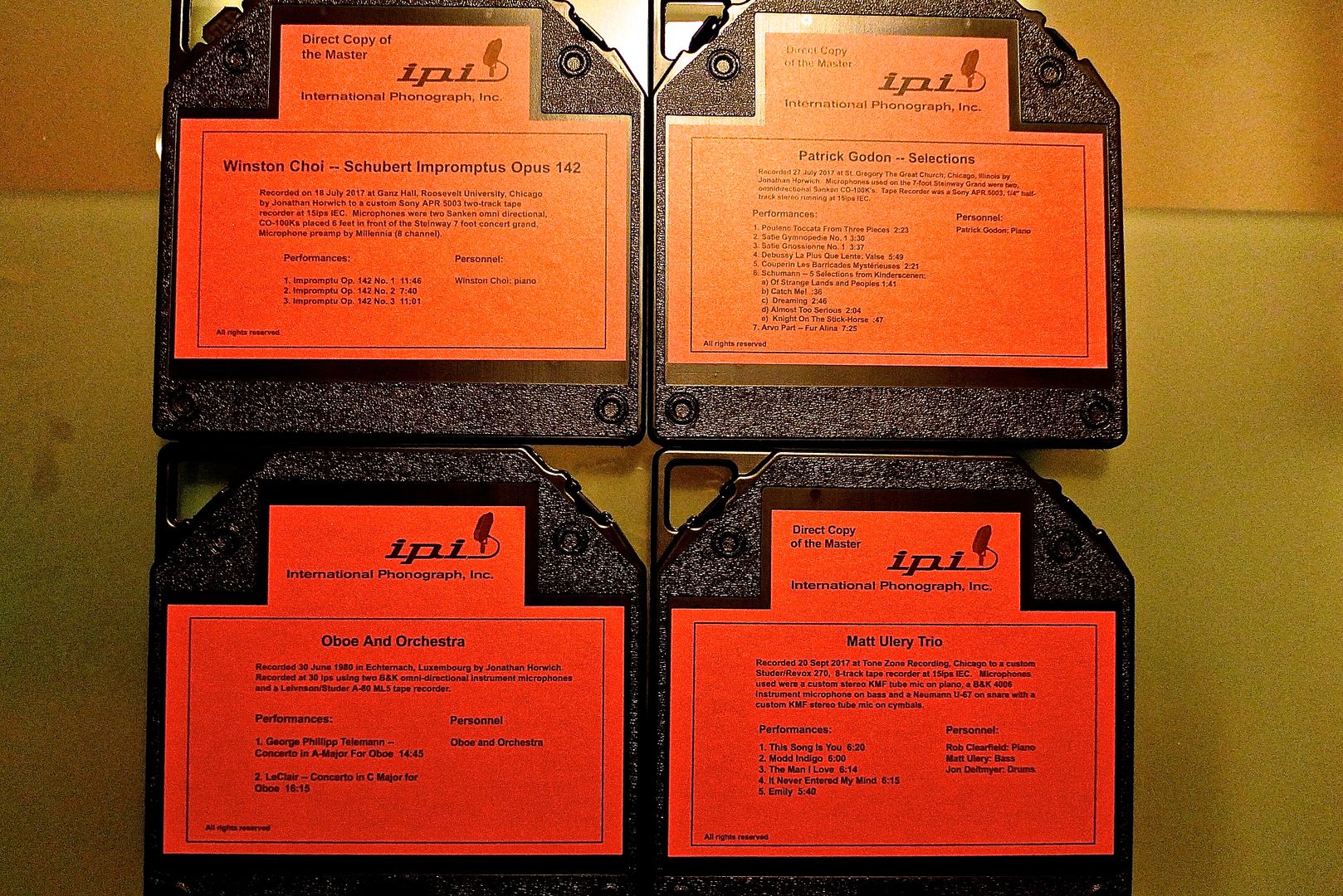
-
You can also use the Universal Tape Stage from Eternal Arts for switching from RCA to XLR.
-
Sincere congratulations for the acquisition of this superb machine. Now that the hunt for a tape deck is over, there is a new hunt starting: finding some good tapes. The fun never ends.
-
These tapes arrived today:
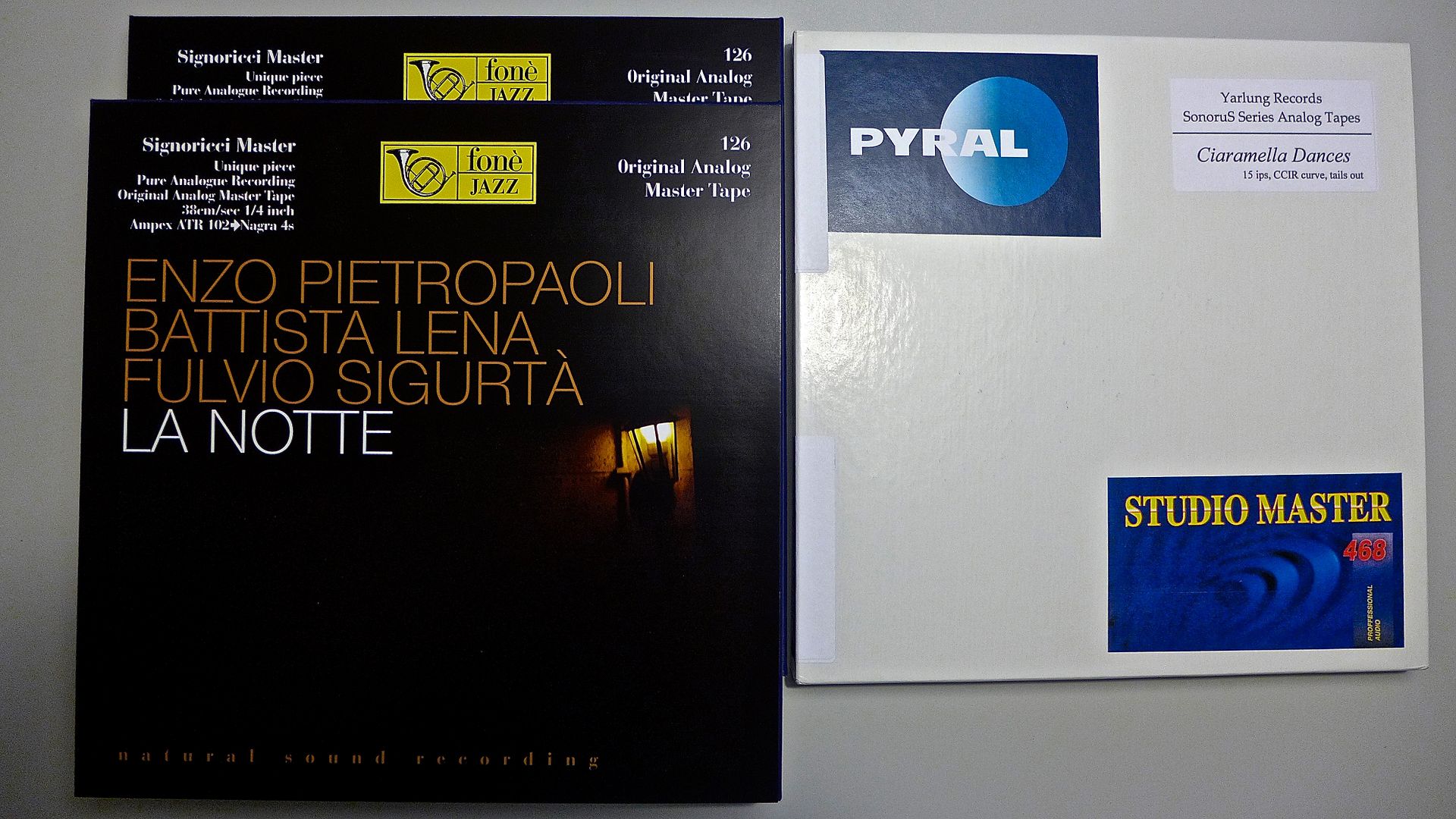
The Yarlung Records tape is a beautiful recording of Renaissance and Baroque music on period instruments. It is Clearly a winner.
Cesare Ricci, the owner of Fone, Offered me the LP Several months ago. I really liked the LP and I ordered the tapes. There are actually more tracks on the tapes than on the LP Which is a great bonus.
- LISTEN TO MUSIC and Apexorca
-
 2
2
-
I have Decided to slow down my purchases of LPs, CDs / SACDs and the high resolution files in order to focus on building a decent tape library. I'll have more than 100 tapes with some 15 additional ones thatshould arrive in the coming weeks / months. Mainly classical and some jazz music from MA Recordings, Horch House, Open Reel Records, Tape Project, STS, Pearl Record, Chasing the Dragon, IPI, Fone and Opus third
Quality and sound wise, Fone and Opus 3 are the most natural ones hence the reason Why these two labels are among my main tape suppliers.

- calle_jr, LISTEN TO MUSIC, eliot and 1 other
-
 4
4
-
My contribution to the Swedish economy. They have just arrived. As usual, Jan-Eric is always highly responsive.
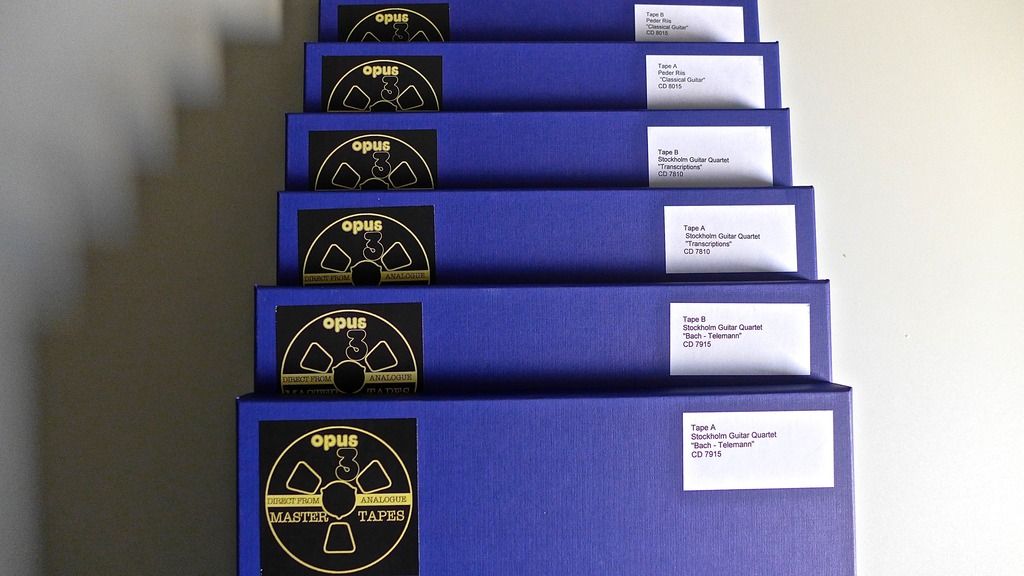
- calle_jr, LISTEN TO MUSIC, Bebop and 1 other
-
 4
4
-
2 hours ago, UffeZ said:
Many thanks for a (usually) good story.

Very interesting and it was fun to see the last pictures of the extensive renovation.
Really fun also to see that he used the Nagravox repair kits. I have posed the question several times on various tech forums for a few years without getting a good response. The sentences have been shared, but now I do not think more. If your contact uses Nagravox is good stuff
My players will go to the renovation in October. With these images, I will send with these kits for assembly. The players are fully functional but I want them to be in perfect condition and the past of many years of trouble free playing.
The engines, two spolmotorer capstan and I will take care of yourself along the way.
Revox and Studer appeared only used Papst motors which are nice engines to renovate. The elderly had SKF bearings and the latter had plain bearings in sintered bronze.Hello. I am Mr. D, the owner of the Studer A80 RC.
Audio House does not have the large capacitors with the nut bolt in stock anymore. My tech therefore ordered these from Nagravox in Australia. He tested them all with his Audioprecision in order to ensure that they were up to specs. These are the only parts that were supplied from Nagravox.
-

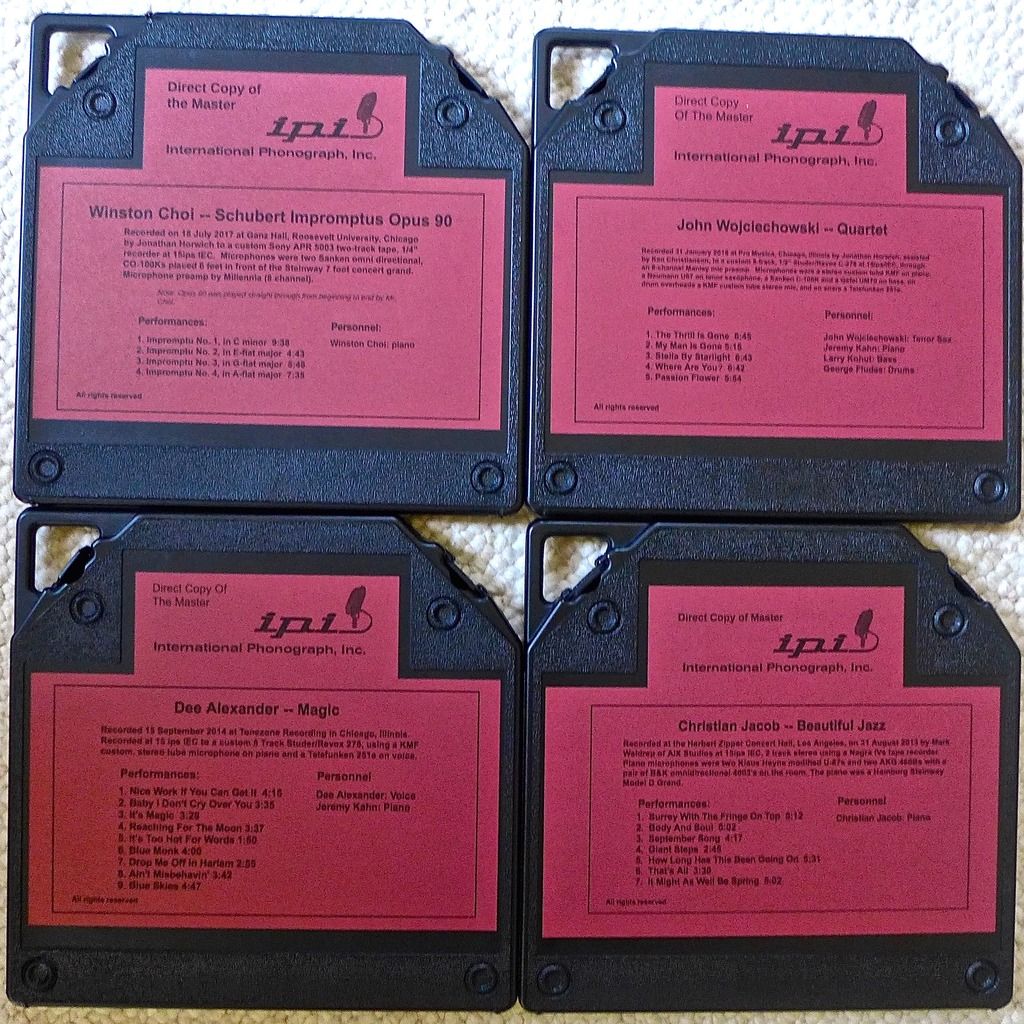
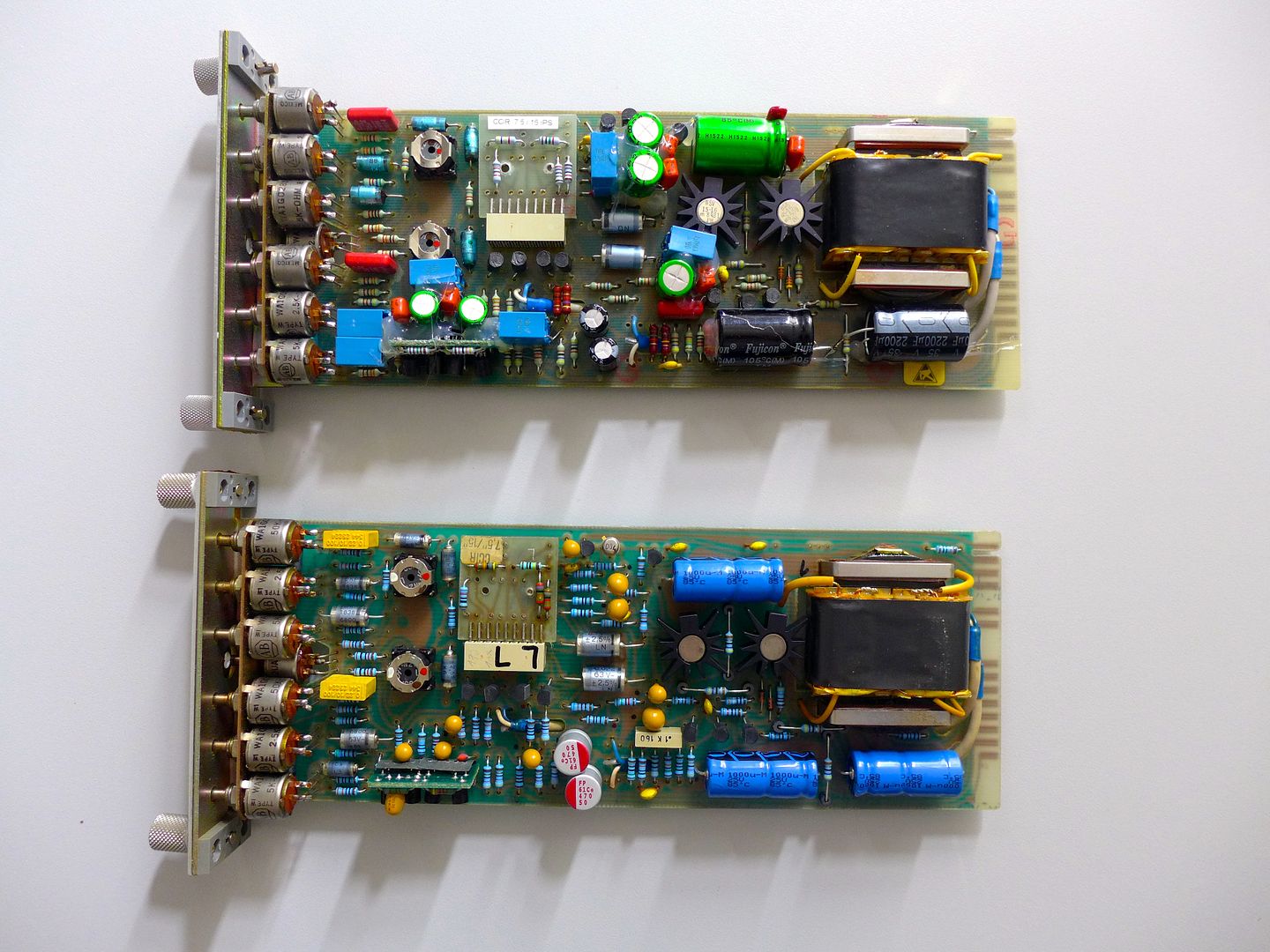
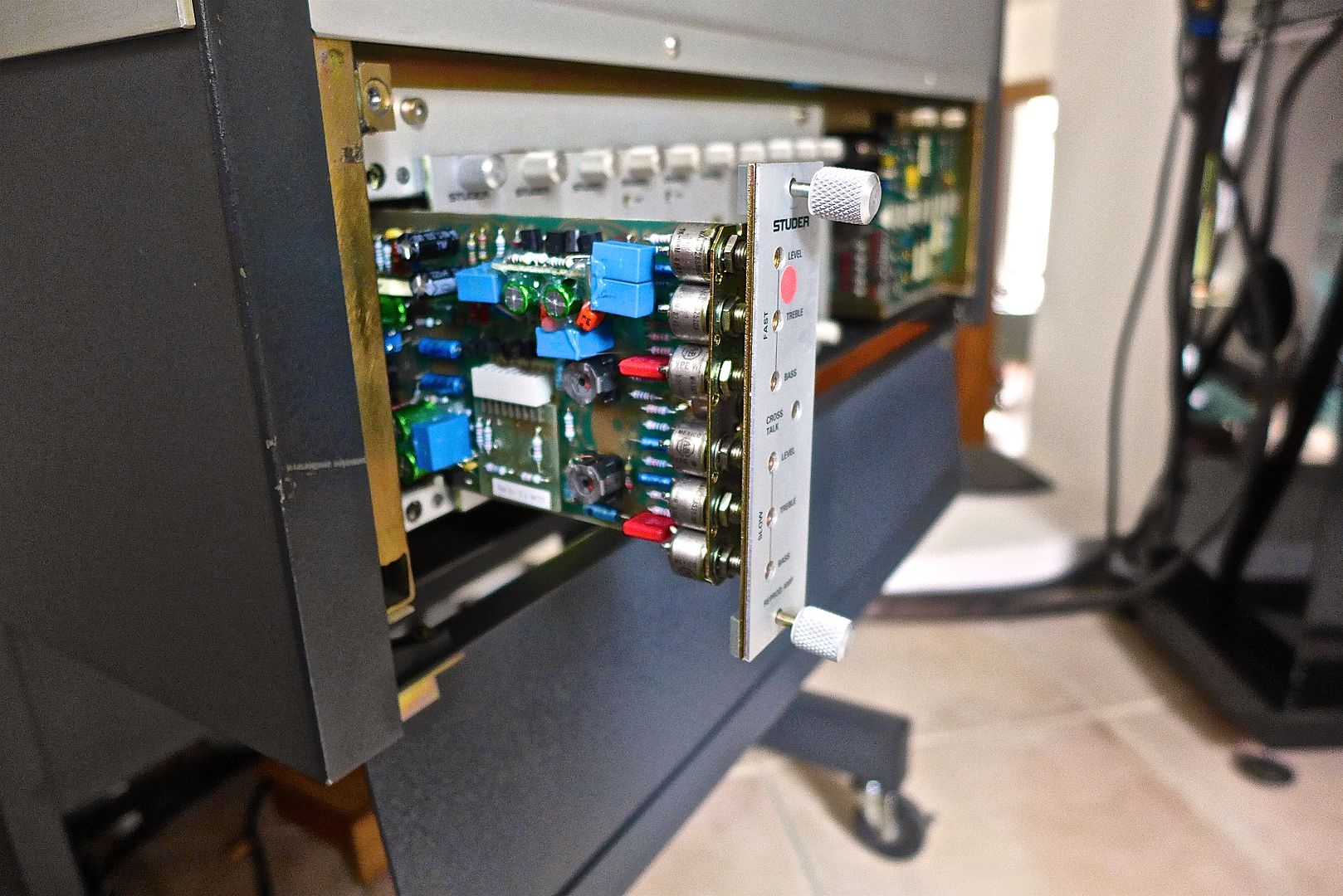
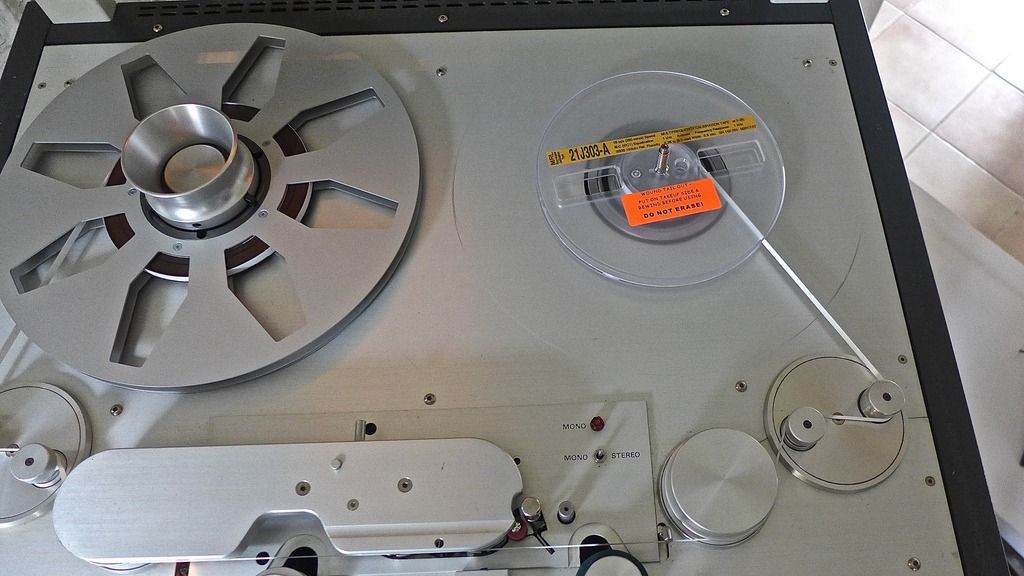
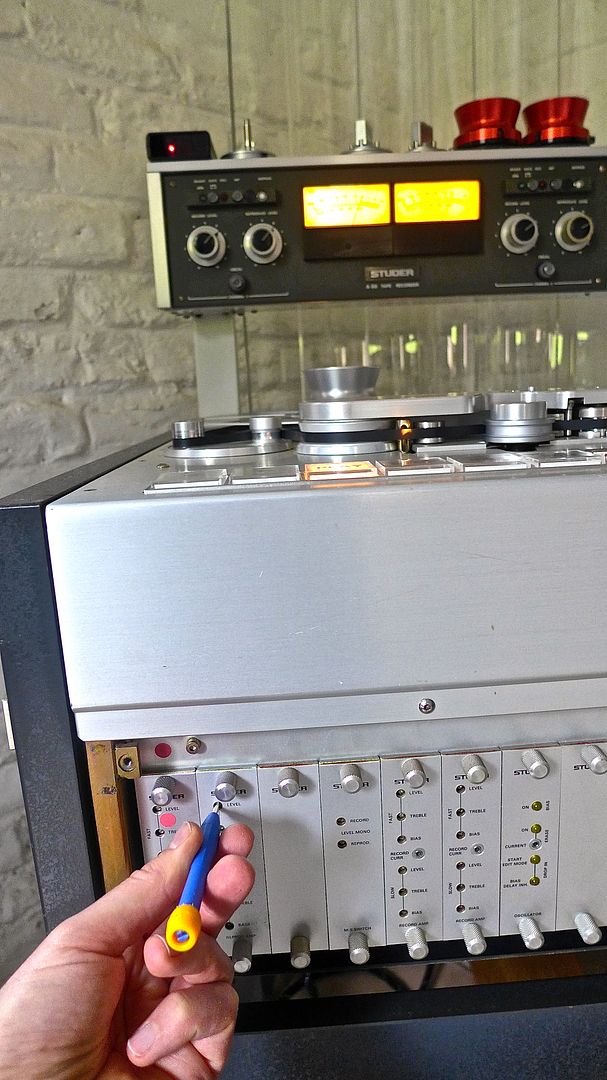

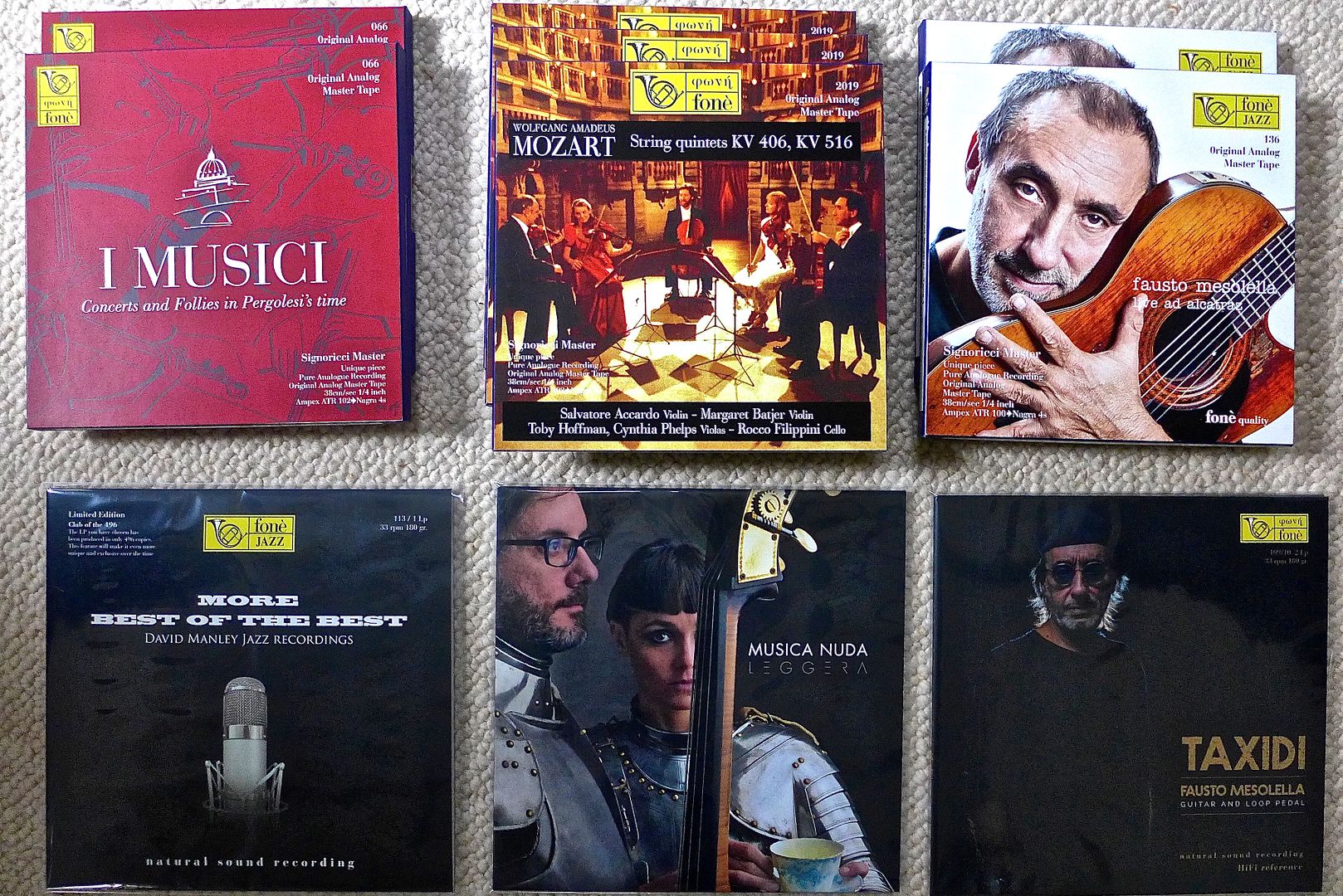
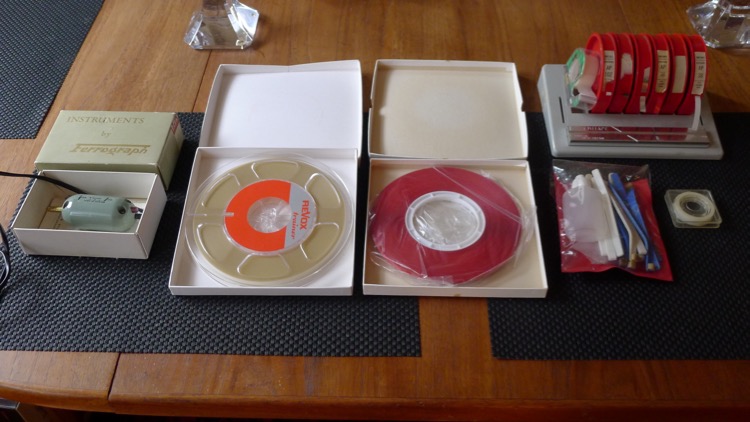
Mästarmöte har en vinnare!
in Euphonia Bildforum
Posted · Edited by Mr. D
I have not changed the belt of my Brinkmann Balance Over the last 5 years since I acquired it.